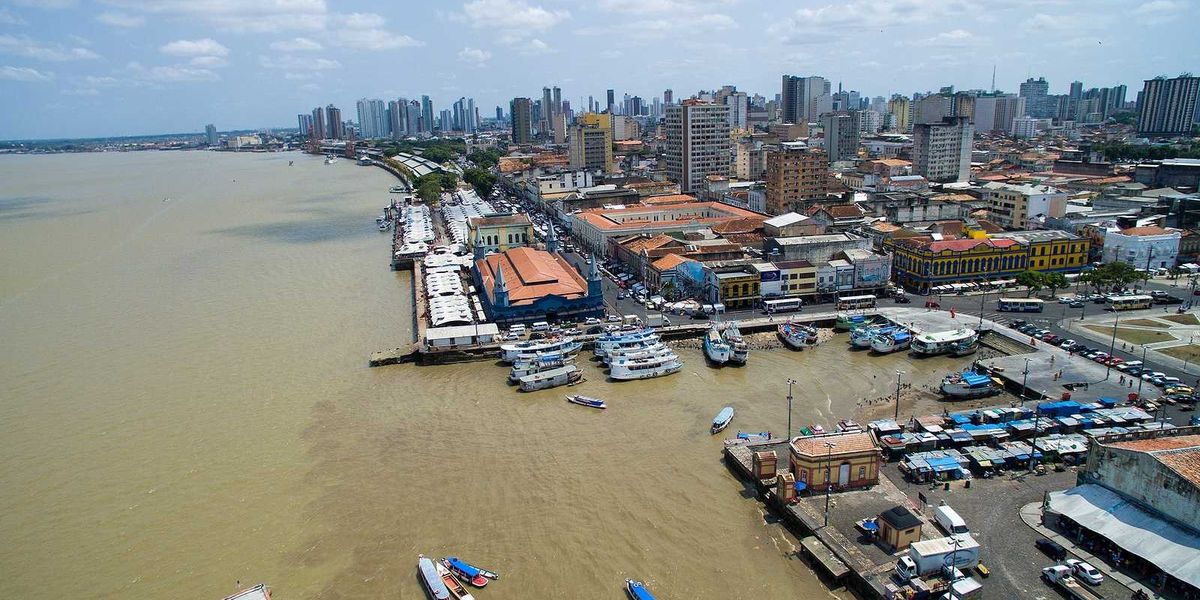arctic
Biden faces pressure to increase Arctic conservation efforts
Over 50 Democratic lawmakers are urging the Biden administration to expand protections in the Arctic, citing growing climate concerns and threats from development.
In short:
- Led by Sen. Ed Markey and Rep. Jared Huffman, the group called on the Interior Department to expand federal protections for Arctic Special Areas.
- The Interior Department is reviewing whether to increase protections across 23 million acres, having already safeguarded 13 million acres in April.
- Lawmakers stress that climate change and development are severely impacting wildlife and indigenous subsistence areas in the Arctic.
Key quote:
“This opportunity to take a renewed look at needed protections is especially timely, as the effects of climate change in the Arctic — from declining sea ice, permafrost thaw, and record temperatures — are felt more acutely than ever before and new extractive development encroaches more and more into important habitat and subsistence areas.”
— letter from more than 50 congressional Democrats
Why this matters:
Rapid Arctic warming and increased industrial activities threaten fragile ecosystems and indigenous communities. Additional protections could prevent further damage, particularly as critical wildlife and plant habitats shrink.
Arctic heat surges to unprecedented levels
The Arctic is experiencing record-breaking temperatures due to intense heat domes, with some areas up to 40 degrees Fahrenheit above normal.
In short:
- Northern Canada, Alaska and Scandinavia have faced extreme heat, with temperatures reaching up to 100 degrees Fahrenheit in some Arctic locations.
- The heat, driven by climate change, is displacing cooler air, temporarily easing heat in parts of the U.S.
- Arctic sea ice is near its annual minimum, with levels among the lowest on record.
Key quote:
"In early August, snow and ice melting on the surface of the Svalbard ice caps reached the highest levels ever recorded."
— the European Union’s Copernicus Climate Service
Why this matters:
Persistent extreme heat in the Arctic accelerates ice melt, contributing to global sea level rise and further destabilizing the climate system. The ongoing climate shifts threaten ecosystems and human communities worldwide.
Related:
New study reveals Arctic sea ice complicates shipping routes
Melting sea ice in the Canadian Arctic is paradoxically making shipping routes more hazardous due to the movement of centuries-old thick ice, according to recent research.
In short:
- Melting thinner ice is releasing thick, old ice, creating choke points in the Northwest Passage.
- The study, reflecting actual ship traffic from 2007-2021, shows increased risk on key routes, despite longer shipping seasons in some areas.
- Local coastal communities face increased food and supply costs due to shortened shipping seasons and reliance on costly airlifts.
Key quote:
"It's true that the Arctic sea ice in general is showing significant retreat and melting, and will continue to do so, but our new study shows that it's not a simple story."
— Alison Cook, Scottish Association for Marine Science
Why this matters:
Thick ice obstructing Arctic shipping routes poses economic and logistical challenges for coastal communities, increasing their dependence on expensive airlifts. Additionally, this complicates future plans for using the Northwest Passage as a reliable trade route, affecting global shipping logistics.
Young Indigenous voices address climate change at UN forum
Indigenous youth leaders shared their unique challenges and solutions at this year's United Nations forum on Indigenous issues.
In short:
- This year's United Nations Permanent Forum on Indigenous Issues focused on listening to Indigenous youth's interests and concerns.
- The young leaders from across the globe expressed a wide array of concerns, from the dual vulnerabilities of Indigenous and LGBTQ+ communities in Greenland due to climate change to struggles for self-determination exacerbated by external political pressures and environmental concerns.
Key quote:
“When we listen to the land, the land will listen to us. It’s a language. Climate change is creating a language barrier.”
— Jakirah Telfer, representative of the Kaurna peoples in Australia.
Why this matters:
Many indigenous communities rely on natural resources for their livelihoods—such as hunting, fishing and agriculture. Changes in climate patterns can lead to resource scarcity, affect food security and disrupt traditional economic activities.
We need to stop compartmentalizing the environment, family and culture as separate problems, argued Diné researcher Kevin Patterson in this 2023 essay.
Gray whales face a tough road ahead after a significant die-off
A recent study suggests the dramatic increase in gray whale deaths along the Pacific Coast over the last six years may be due to a critical shortage of food in their Arctic feeding grounds.
In short:
- The gray whale population has suffered a dramatic decline, with more than 700 whales found dead since 2018, raising questions about their survival.
- Researchers pinpoint a drop in Arctic and sub-Arctic food supplies as a primary cause, though the exact reasons for this scarcity remain unclear.
- This die-off provides a crucial data point for understanding and potentially addressing the challenges faced by marine life in changing oceanic environments.
Key quote:
"We didn’t find any evidence of anything that looks like an infectious disease. There were no telltale signs of infection of any kind."
— Padraig Duignan, pathologist at the Marine Mammal Center
Why this matters:
Gray whales along the Pacific Coast have experienced significant die-offs, tentatively attributed to changing Arctic conditions and a decline in their primary food sources. Some researchers have observed a direct correlation between these die-offs and both the levels of Arctic sea ice and the biomass of benthic amphipods, a key food source for the whales.
Arctic trees multiply as sea ice retreats, signaling an environmental shift
In the Arctic, the expansion of white spruce is accelerating due to increased snowfall linked to sea ice loss, presenting new climate challenges.
In short:
- White spruce trees are encroaching on Alaskan tundra previously too harsh for their growth, exacerbated by the Arctic warming rate which is significantly higher than the global average.
- This 'Arctic greening' alters the local albedo effect, where darker tree areas absorb more sunlight, contributing to permafrost thawing and the potential release of greenhouse gases.
- Research indicates that decreased sea ice leads to more evaporation and snow, which aids young spruce survival, facilitating the northward spread of boreal forests.
Key quote:
"Once it gets to be about waist high, it's going to live. It's the little babies that don't survive."
— Roman Dial, ecologist at Alaska Pacific University
Why this matters:
Increased tree coverage in the Arctic could intensify warming trends and contribute to the escalating release of greenhouse gases from permafrost.
Arctic shorebirds are experiencing climate-related changes as well: The daily rate of eggs stolen from shorebirds' nests in the Arctic is three times higher than it was 70 years ago.
Arctic rainfall: a new climate challenge
The Arctic faces a new environmental challenge as rainfall increases, impacting wildlife and indigenous communities.
In short:
- Rainfall in the Arctic, once rare, is now more frequent, causing significant ice loss and ecological disruptions.
- These rain-on-snow events are affecting wildlife survival and indigenous people's way of life.
- The increase in Arctic rainfall is a direct consequence of global warming and has far-reaching implications.
Key quote:
“We are trying to keep up with what is going on, but we keep getting surprised.”
— Mark Serreze, director of the National Snow and Ice Data Center at the University of Colorado
Why this matters:
This shift in Arctic weather patterns is critical as it not only accelerates ice loss and sea level rise but also poses severe challenges to Arctic wildlife and Indigenous communities. Understanding and addressing these changes are vital for global climate change mitigation efforts.
People are flocking to see melting glaciers before they're gone—bringing both benefit and harm.









